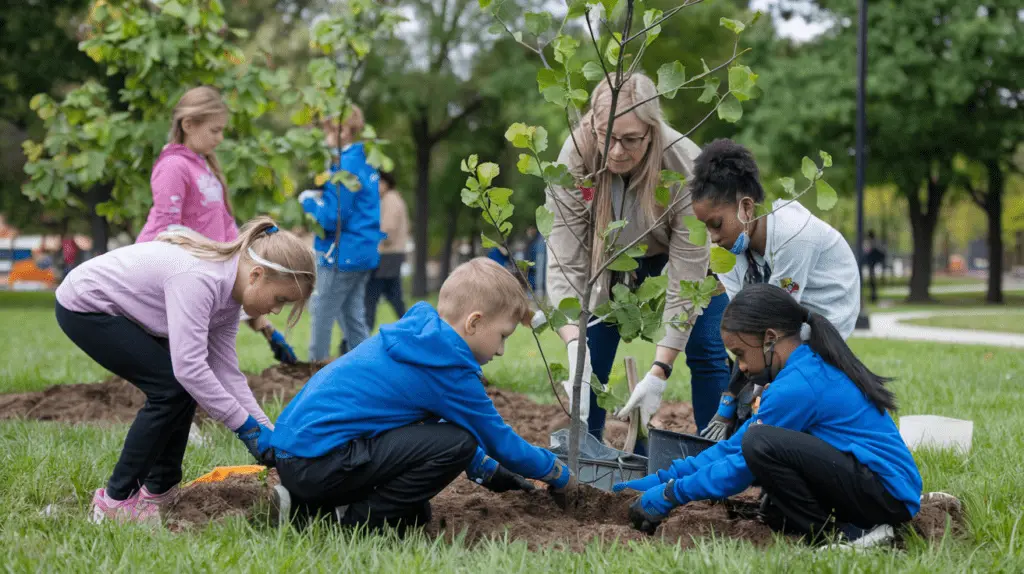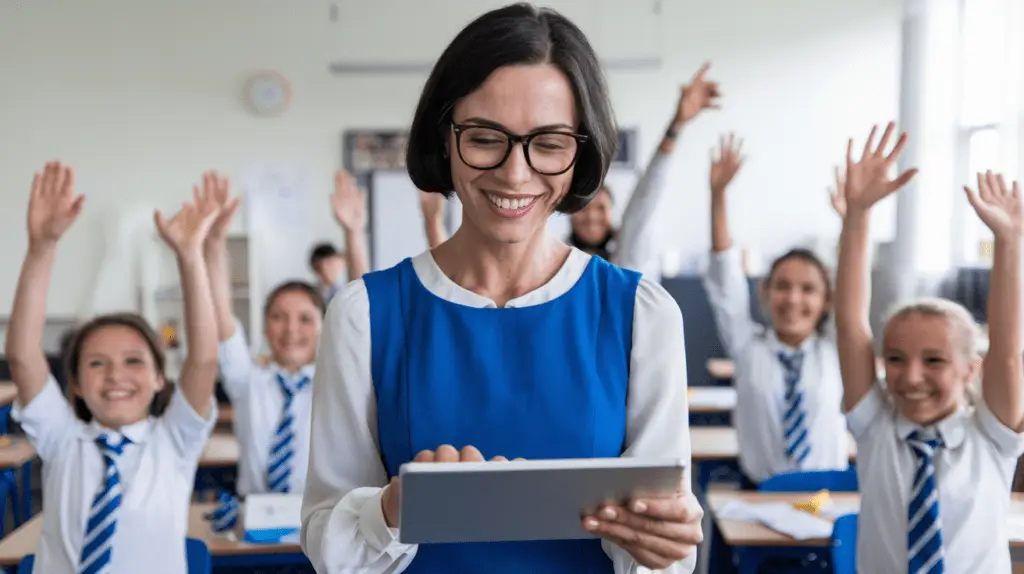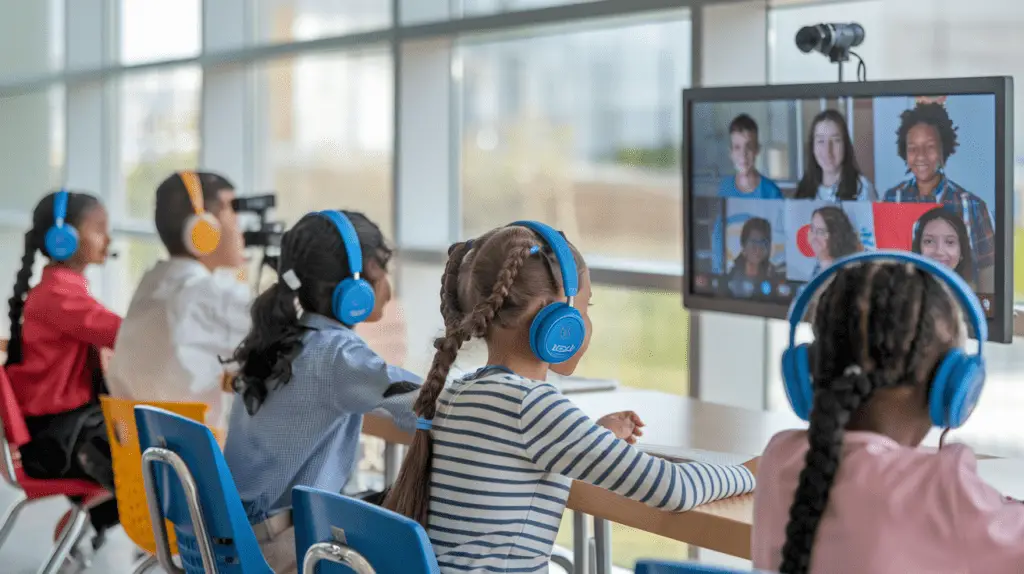In today’s interconnected world, the importance of global learning cannot be overstated. As educators, we have the unique opportunity to prepare our students for a future where cross-cultural collaboration and global citizenship are essential skills. But how can we effectively bring the world into our classrooms? The answer lies in harnessing the power of educational technology for global learning.
At Class2Class, we understand the transformative potential of technology in education. Our platform is designed to bridge geographical gaps and create meaningful connections between students and teachers worldwide. By leveraging educational technology for global learning, you can unlock a wealth of benefits for your students and your own professional development.
Let’s explore five compelling reasons why integrating global learning technology into your teaching practice is not just beneficial – it’s essential for preparing students for the challenges and opportunities of our increasingly interconnected world.
1. Fostering Cultural Understanding and Empathy
Educational technology for global learning opens doors to diverse cultures and perspectives that were once out of reach for many students. Through virtual exchanges and collaborative projects, students gain first-hand experience interacting with peers from different backgrounds. This exposure goes beyond textbook knowledge, allowing students to develop genuine empathy and understanding for cultures different from their own.
For example, a history class studying World War II could connect with students in Europe to share family stories and local perspectives on the war’s impact. This personal connection makes history come alive and helps students understand the global implications of historical events. By engaging in these authentic interactions, students develop a more nuanced understanding of global issues and learn to appreciate diverse viewpoints.
2. Developing 21st Century Skills
The global workplace demands a unique set of skills that go beyond traditional academic knowledge. Educational technology for global learning provides an ideal environment for students to develop these crucial 21st-century skills:
Communication: Students learn to express themselves clearly across language and cultural barriers. They practice articulating their ideas in written and verbal forms, often adapting their communication style to suit different cultural contexts. This skill is invaluable in our increasingly globalized world.
Collaboration: Working on projects with international peers teaches students how to contribute effectively in diverse teams. They learn to navigate time zone differences, cultural nuances, and varying work styles – all essential skills for future global professionals.
Critical Thinking: Analyzing global issues from multiple perspectives enhances students’ ability to think critically and solve complex problems. By engaging with peers from different countries, students are exposed to alternative viewpoints and approaches, challenging their assumptions and broadening their problem-solving toolkit.
Digital Literacy: Using various technological tools for global learning improves students’ digital competencies, preparing them for a tech-driven future. From video conferencing to collaborative online workspaces, students become adept at leveraging technology for effective communication and project management.
By engaging in real-world, project-based learning with global partners, students naturally develop these skills in a meaningful context. This practical application of 21st-century skills sets them up for success in higher education and their future careers.
3. Enhancing Language Learning
For language teachers, educational technology for global learning is a game-changer. It provides authentic opportunities for students to practice language skills with native speakers. Beyond traditional language exchange programs, technology allows for ongoing, sustained interaction that can significantly boost language proficiency.
Imagine your Spanish class collaborating on a long-term project with students in Spain or Latin America. The motivation to communicate effectively in the target language becomes intrinsic as students form real connections with their peers abroad. This authentic language practice goes beyond textbook exercises, allowing students to learn colloquialisms, cultural nuances, and practical application of the language.
Moreover, the multimodal nature of digital communication – combining text, audio, and video – caters to different learning styles and reinforces language acquisition through varied inputs. Students might exchange written messages, participate in video calls, or create multimedia presentations, all of which contribute to a well-rounded language learning experience.
4. Addressing Global Challenges
One of the most powerful aspects of educational technology for global learning is its ability to engage students in tackling real-world problems. The United Nations Sustainable Development Goals (SDGs) provide an excellent framework for global collaboration projects. Students can work together across borders to research, discuss, and propose solutions to pressing global issues like climate change, poverty, or gender inequality.
At Class2Class, we integrate the SDGs into our project framework, allowing teachers to easily align global learning initiatives with these important goals. This approach not only educates students about global challenges but empowers them to become active problem-solvers and global citizens.
For instance, students from different countries might collaborate on a project addressing SDG 13: Climate Action. They could share local environmental data, discuss the impact of climate change in their respective regions, and collectively develop innovative solutions. This hands-on approach to global issues fosters a sense of global responsibility and empowers students to see themselves as agents of change.

5. Professional Growth for Educators
The benefits of educational technology for global learning extend to teachers as well. By engaging in international collaborations, you’ll expand your own global network, gain fresh perspectives on teaching methodologies, and stay at the forefront of educational innovation.
Our platform offers opportunities for professional development through teacher-to-teacher connections, webinars, and collaborative projects. You’ll join a community of like-minded educators passionate about bringing global perspectives into their classrooms. This network provides a valuable support system, allowing you to share best practices, troubleshoot challenges, and continuously evolve your teaching approach.
Furthermore, participating in global projects can reignite your passion for teaching. As you witness your students’ growth and engagement in international collaborations, you’ll find new inspiration and motivation in your professional journey.
Getting Started with Educational Technology for Global Learning
Ready to embark on your global learning journey? Here’s how you can get started with Class2Class:
- Sign up for a free account at Class2Class.org
- Complete your profile, specifying your teaching interests and goals
- Browse our project library or propose your own collaboration idea
- Connect with teachers worldwide and start planning your first global project
Our user-friendly platform and supportive community make it easy to integrate educational technology for global learning into your teaching practice, regardless of your tech expertise. We provide step-by-step guidance, resources, and ongoing support to ensure your success.
“Class2Class has opened my students’ eyes to the world. They’re not just learning about other cultures; they’re actively engaging with them. It’s been a transformative experience for all of us!” – Sandra Maj, 8th Grade Teacher, Poland

Conclusion: Embrace the Future of Education
Educational technology for global learning is not just a trend – it’s a fundamental shift in how we prepare students for the future. By breaking down classroom walls and connecting students with the world, we create more engaged, empathetic, and globally competent learners.
At Class2Class, we’re committed to making global learning accessible to every teacher and student. Our platform provides the tools, resources, and community support you need to transform your classroom into a hub of international collaboration.
Don’t let your students miss out on the incredible opportunities that educational technology for global learning can offer. Join Class2Class today and take the first step towards creating a more connected, understanding, and globally-minded generation of learners.
Ready to revolutionize your teaching and open new worlds for your students? Sign up for your free Class2Class account now and start your global learning adventure!
For more information on the impact of global education, visit the UNESCO page on Global Citizenship Education.


